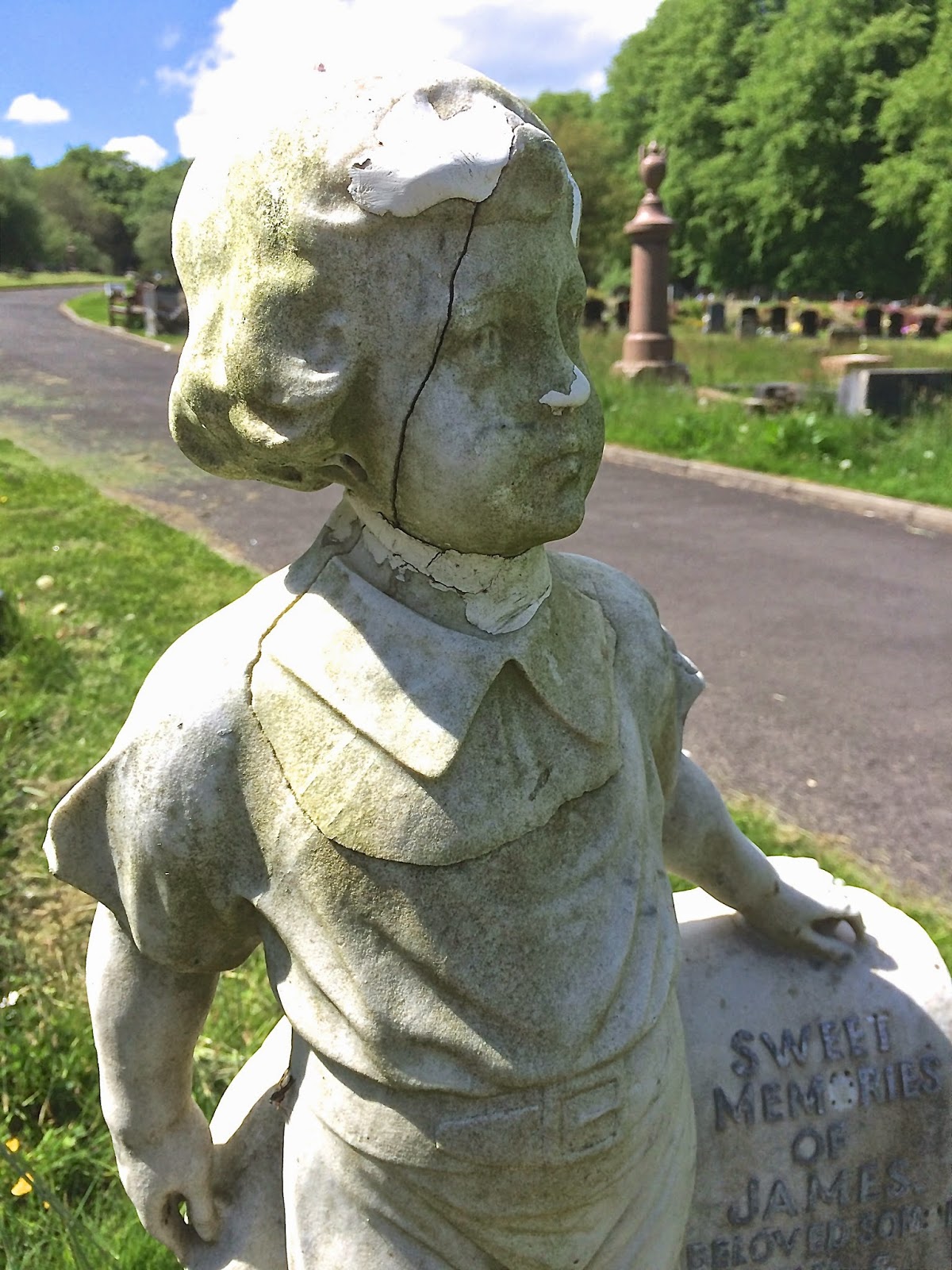Colne Cemetery in Lancashire contains many historical graves. Stood against a wall to one side of the chapel is a headstone that records a dreadful act. The headstone records the following stark statement:
"Joseph [Halstead] was barbarously murdered in the 44th year of his age while engaged in his duty as a Special Constable during the Riot which took place in this Town on the Even of 10 August 1840 leaving four orphan children to lament his loss".
Quite literally, his brains were 'bashed out' by his assailants!
By way of background:
In August 1840, riots took place in Colne. A large mob was protesting against the formation of the Lancashire Constabulary. The situation quietened for a day or two after two troops of soldiers arrived from Burnley. Then the situation got appreciably worse after the troops were withdrawn.
A report in The Times newspaper described the event, thus:
" . . . But on Monday morning the military were withdrawn, and it very soon became evident that their absence had so emboldened the rioters that another attack might very confidently be expected as soon as night favoured the designs of the mob. In order to be prepared as well as circumstances would permit, the magistrates held a meeting, and swore in a number of the more respectable inhabitants as special constables, to assist the regular police forces. In the meantime the greatest excitement prevailed, crowds gathered in the street, and as soon as darkness came on, a large mob congregated, and went in a body a little way out of the town to the residence of a gentleman whose name we have not been able to learn, where they tore down the iron palisades, and, armed with these and with pistols and wooden bludgeons also, they returned to Colne.
In Clayton-street, they were met by police and special constables, and a terrible collision took place, the rioters fighting with the utmost desperation, and the constabulary defending themselves as well as they were able, and endeavouring to disperse the misguided crowd. This, we believe, they at last accomplished, but not until one life had been sacrificed, and various injuries received. The unfortunate person who has fallen a victim to this mad violence is Mr. Joseph Halstead, a manufacturer of Colne, who was acting as one of the special constables. He was knocked down in the melée, and in a very few moments his brains were actually battered out by the infuriated multitude. Of course, when his body was rescued by his friends, no spark of life remained. In addition to the awful catastrophe which has befallen Mr. Halstead, we understand that Mr. Temple, the banker, has been seriously injured, and that one of the policemen has received a very severe stab, but we are unable to give the details of these and several other casualties. . ."
A service was held to mark the anniversary in 2010 after the Police had arranged for the headstone to be renovated. A report in the Lancashire Evening Telegraph provided some further information about the event:
". . . He was originally buried in the graveyard of Colne Parish Church, but his and other graves had to be removed when Albert Road was widened at the end of the 19th Century. His tombstone was then erected as a headstone in Colne Cemetery where it remains.
Councillor Ann Kerrigan praised police for marking the anniversary of SC Halstead’s death and renovating his headstone.
She said: “I suppose it’s apt because we have got such good community police officers now. “A police officer in those days would have been known in the local community and his death would have been a shock.”
Richard Boothman was found guilty of SC Halstead’s murder and given the death sentence, although he protested his innocence.
He was later transported to Van Dieman’s Island, now known as Tazmania, where he became a successful businessman.
Two others, James Wilkinson and Thomas Riley, were arrested for accessory to murder."



















































